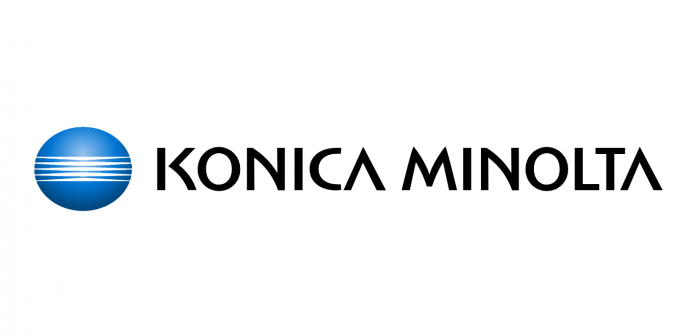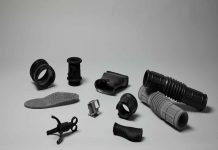
Media Release
Konica Minolta, a leading supplier of 3D printing equipment and services in Australia, is working with partners and customers to help address the likely shortage of personal protective equipment (PPE) and ventilators required on the frontlines of the fight against COVID-19.
Matt Hunter, innovation product manager, Konica Minolta, said, “Rapidly-dwindling supplies of PPE and lifesaving ventilators have created a nightmare scenario in other countries as they battle the virus. 3D printing offers a unique opportunity to address these shortages by providing a fast, reliable production method that means essential equipment can be manufactured and delivered to hospitals without long lead times.
“Konica Minolta knew that many Australian organisations would be eager to help protect patients and healthcare workers from the deadly virus. We reached out to key customers and partners in the 3D printing space, as well as health authorities across Australia, to see what we could do. As a result, Konica Minolta is facilitating the development and manufacture of two key pieces of equipment: the hard-to-source Venturi ventilator valve for patients; and the essential P2/N95 filters for PPE for frontline health workers.”
Konica Minolta partner 3D Systems has designed the Venturi ventilator valve for 3D printing and sent the file to Konica Minolta, which will print the valves if they become required. The 3D-printed valve uses biocompatible, sterilisable, high-temperature-resistant material, making it ideal for medical use. And, because it’s 3D printed, the team can provide high volumes at unprecedented speeds, potentially meeting demand as the COVID-19 crisis hits its peak.
The P2/N95 filter is an essential part of the PPE that healthcare workers require. It filters the virus out of the air being breathed so the wearer breathes clean air. These cost-effective masks with a 3D-printed adaptor and easily replaceable filtration can be mass-produced and sent immediately to healthcare workers on the frontline.
Konica Minolta worked with Erebus Motorsport to develop the filter, which is printed using a 3D Systems Figure 4 3D printer. An existing Konica Minolta customer, Erebus had already been in contact to see how 3D printing could help in the fight against COVID-19. Working with Supercars medical delegate, Dr Carl Le, the team created the e-Mask, a snorkel-like face mask with a 3D-printed adaptor for the easy replacement of P2/N95 filters.
The Erebus team and Dr Carl Le also designed a ventilated Perspex box, which is placed around the patient’s head and chest to provide a continuous filtered airflow, called the e-Aerosol Box. The e-Aerosol Box has already been distributed to hospitals around Australia, as the Erebus team now looks at adapting the model for ambulance transportation.
Barry Ryan, CEO, Erebus Motorsport, said, “The urgency to produce PPE equipment for our health care workers right now is at the forefront of our minds, so with Dr Carl’s guidance we identified what is most crucial and our partners like Konica Minolta have been more than willing to get in and make things happen.
“No matter how big or small, we know that if everyone pitches in then we are doing our part to help protect those who are protecting us.
“It can’t be underestimated. We need to move on things right now and do our part. We want to make sure we are in a better position than overseas, so we are doing all we can to ensure we are ready, if and when the worst hits, and teaming with partners like Konica Minolta and encouraging everyone to pitch in is our way of doing our part as Australians.”
Matt Hunter said, “At this stage, no one knows exactly what the demand will look like as Australia continues to work hard to flatten the curve. However, it’s likely that a fast response will be required to save lives. By facilitating the capacity to 3D print these lifesaving components, Konica Minolta and our customers and partners are playing a small but important role in the fight against COVID-19. Having thoroughly tested the parts, we know they work. We’re now looking to see what other customers and partners we can pull into this project to increase capacity even further, and potentially find new ways to contribute.”
Image Credit: www.konicaminolta.com.au




















